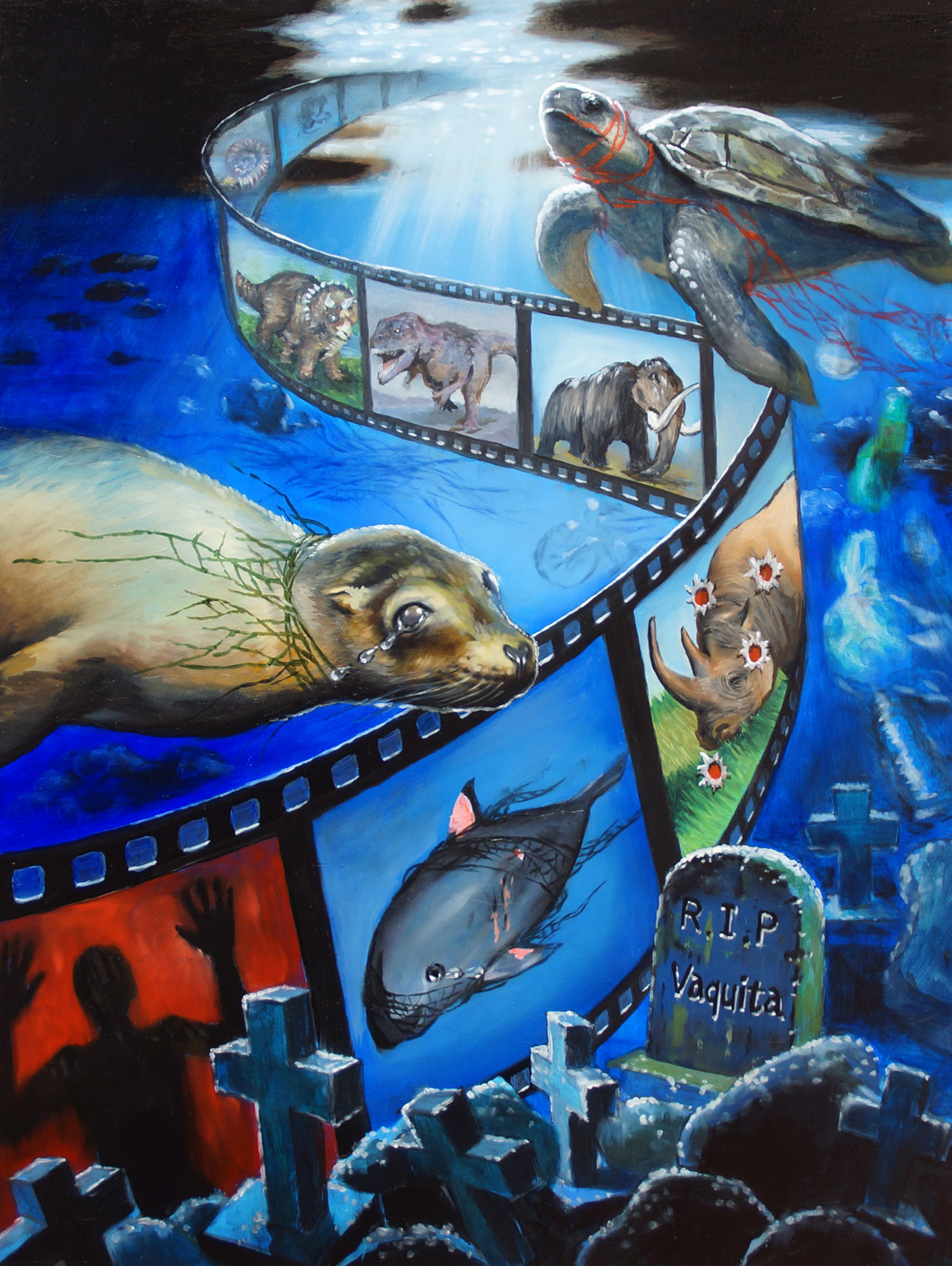The response to our Science Without Borders® Challenge has been overwhelming! We’ve been blown away by the sheer number of submissions that we received from aspiring young scientists and artists all over the world. Last week, we proudly unveiled the finalists in the 11-14 age group, and now, we’re ecstatic to announce the finalists in the 15-19 year-old category.
These young artists hail from all corners of the globe, including China, Indonesia, Korea, the Philippines, Poland, Singapore, Spain, the United Kingdom, and the United States. You will be amazed at their incredible artwork and how well they captured the essence of the theme, “The Sixth Extinction.” Students depicted a diverse range of endangered marine animals in their artwork including whales, fish, polar bears, sharks, sea otters, horseshoe crabs, seals, and crocodiles. We were amazed by these students’ boundless creativity, execution of the theme, and artistic abilities.
Without further ado, please meet our talented 15-19 year old finalists! These exceptional artists have not only showcased their incredible talents but also their unwavering passion for marine conservation.
"We Are Next" by Boram Shim, Age 16, United States of America
ARTIST’S STATEMENT: Humans would be the ones getting extinct at the end of the sixth extinction. I portrayed the extinct animals, an endangered dolphin, and a person lining up in a film tape as a warning that it will eventually be our turn to be extinct, like a scene in a filmstrip that would inevitably be played in chronological order. Unlike the five previous mass extinctions that occurred due to environmental pressures, “the sixth extinction” is driven by human activities like oil spills, ocean trash, and net entanglements. Vaquita is on the verge of extinction—only ten left—due to illegal fishing and entanglement in gillnets. Moreover, less than 10,000 Kemp’s Ridley Turtles are left due to pollution, overfishing, and humans’ use of artificial light. Furthermore, only 1570 Hawaiian Monk Seals are left due to net entanglements. Finally, tombstones symbolize the deaths of humans following the destruction of marine ecosystems.
Stay tuned! We will announce the winners in the next couple of weeks.
